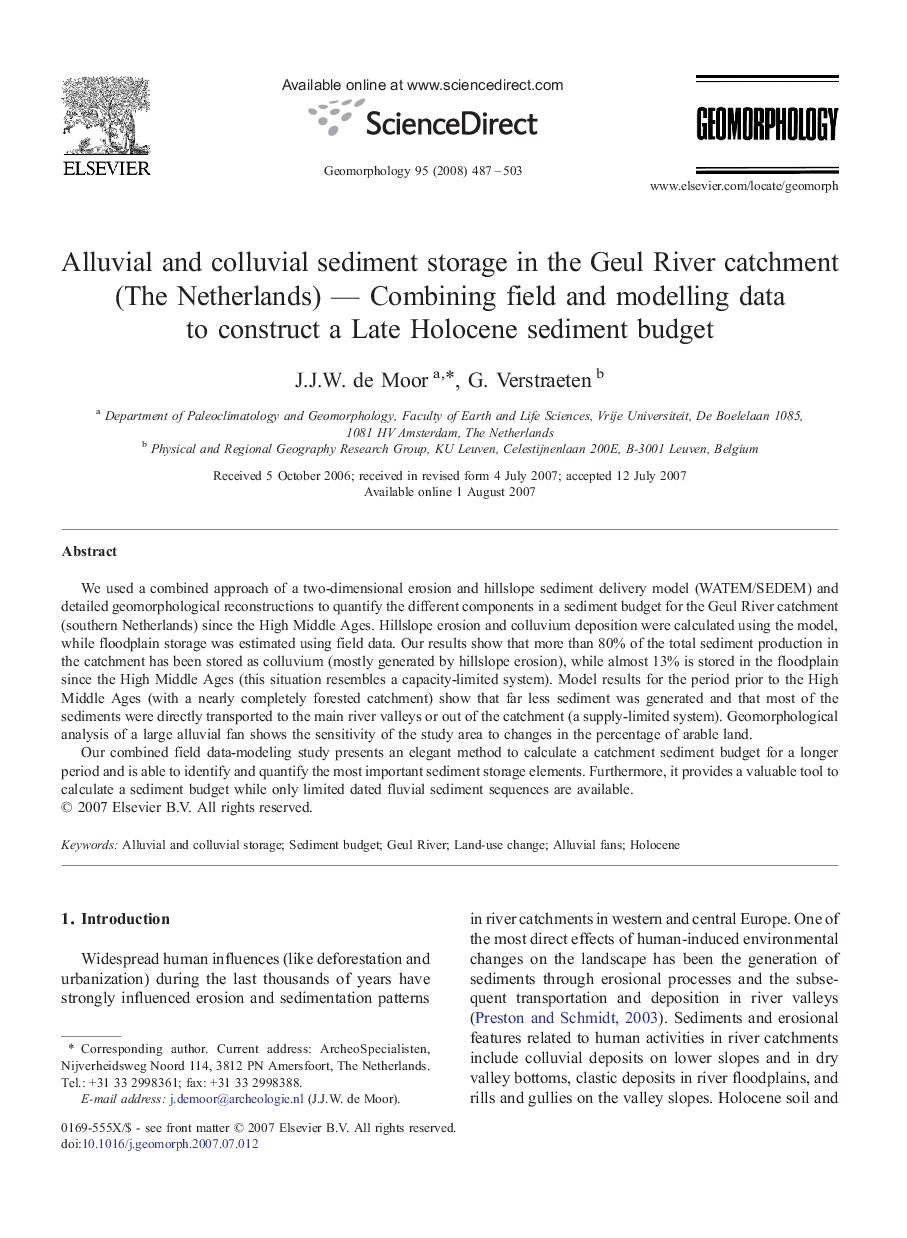| Article ID | Journal | Published Year | Pages | File Type |
|---|---|---|---|---|
| 4686879 | Geomorphology | 2008 | 17 Pages |
We used a combined approach of a two-dimensional erosion and hillslope sediment delivery model (WATEM/SEDEM) and detailed geomorphological reconstructions to quantify the different components in a sediment budget for the Geul River catchment (southern Netherlands) since the High Middle Ages. Hillslope erosion and colluvium deposition were calculated using the model, while floodplain storage was estimated using field data. Our results show that more than 80% of the total sediment production in the catchment has been stored as colluvium (mostly generated by hillslope erosion), while almost 13% is stored in the floodplain since the High Middle Ages (this situation resembles a capacity-limited system). Model results for the period prior to the High Middle Ages (with a nearly completely forested catchment) show that far less sediment was generated and that most of the sediments were directly transported to the main river valleys or out of the catchment (a supply-limited system). Geomorphological analysis of a large alluvial fan shows the sensitivity of the study area to changes in the percentage of arable land.Our combined field data-modeling study presents an elegant method to calculate a catchment sediment budget for a longer period and is able to identify and quantify the most important sediment storage elements. Furthermore, it provides a valuable tool to calculate a sediment budget while only limited dated fluvial sediment sequences are available.
